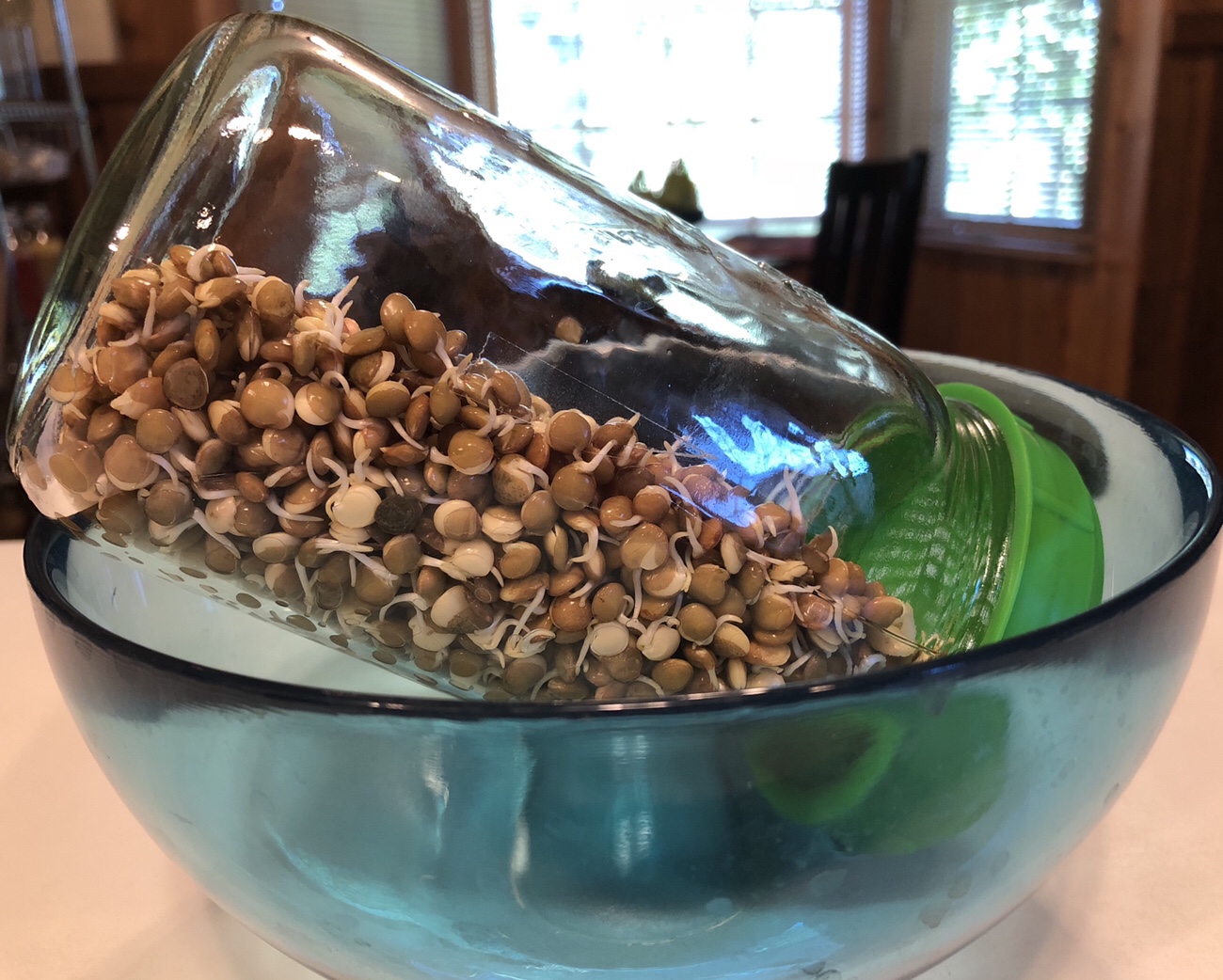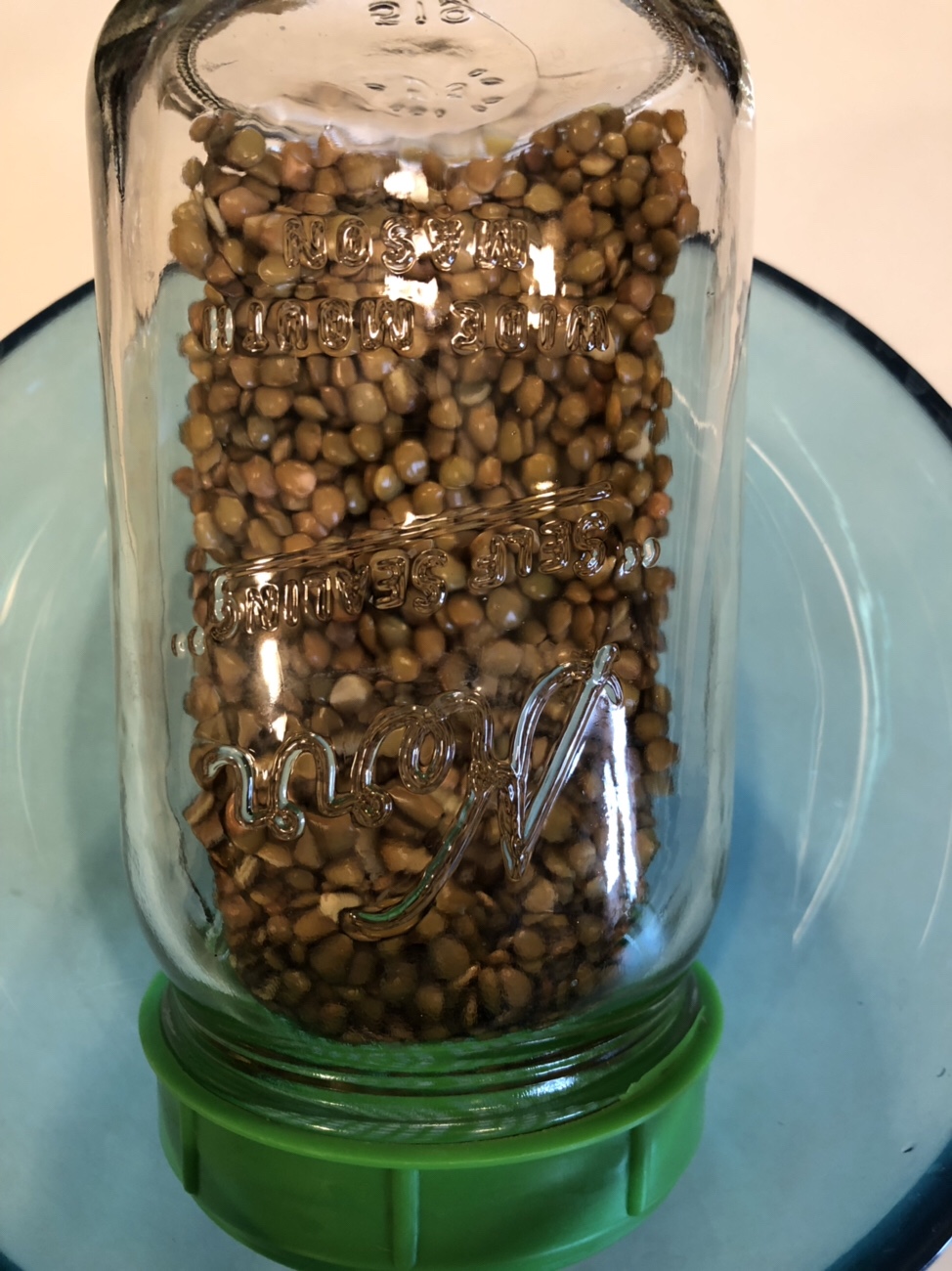
Sprouting is so much fun! It’s easy and rewarding, too. With a quart jar, a mesh top (or easier yet, a sprouting jar lid that screws neatly onto your wide mouth jar), and some seeds or grains for sprouting, you can get started!
Are you wondering about what can be sprouted? When it comes to sprouting, there is a plethora of choices – many seeds, nuts, grains, and even some legumes can be sprouted. For a first sprouting attempt, alfalfa is a great choice: the sprouts are mildly flavored and are delicious on sandwiches and in salads. I’ve enjoyed lots of alfalfa sprouts, but it’s time to branch out.
I recently tried to sprout quinoa but, disappointingly, nary a sprout emerged. I initially suspected irradiation to be the cause, but it was certified organic quinoa and the organic standard doesn’t permit irradiation. It’s odd that not a single sprout emerged, though.
Why sprout? Among its many benefits, the sprouting process increases vitamins and decreases anti-nutrients (a defense mechanism the plant uses to discourage predators and that helps protect the seed until it can germinate), making it more easily digestible and nutritious. In addition, sprouts have an alkalinizing effect on the body.
Lentils, a legume, are highly nutritious and inexpensive, as well as an alkalinizing protein source. Read more about the amazing attributes of lentils here. But how often do you eat lentils? Honestly, I have typically eaten them in Indian dishes like Dal, or lentil soup…that I haven’t prepared myself.
Why not, right? Exactly. Lentils just seemed…complicated. And they’re not! I started cooking them as part of the Vegan Dog Food I make, and realized that they’re actually easy to make. They just require lead time for cooking on the stovetop. Armed with that knowledge, I purchased a 5 pound sack (literally a cute little burlap sack!) of non-GMO brown lentils and dug out the sprouting lids.
To sprout the dry lentils, I soaked about 1/2 cup of lentils in about 2 cups of dechlorinated water, overnight. The next morning, I poured off the liquid (brownish, good for watering plants) and rinsed the sprouts with clean, cold water. They had begun to split and resembled miniscule clams. The following day, tails had appeared!

After rinsing the lentils, I set them at an angle in a large bowl so excess water could drip out. I’ll continue to rinse them a couple of times a day until they’re large enough to be eaten – probably about 3 days after starting them.

If you haven’t sprouted before, you’ll be amazed at how quickly a completely dry seed or grain turns into a tiny plant, right before your eyes.
Lentil sprouts can be eaten raw or cooked. Check back for an update!

Comments are closed.